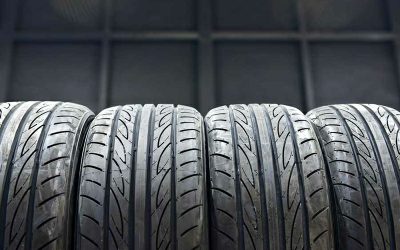Tire wear bars are useful tools to assess tire wear, and evaluate the tire’s necessary standards and conditions. They are also called tread wear indicator bars in different shops.If you are finding information about them and other related facts, this article is for you. Keep reading!
Tire Wear Bars – Where And What Are They Exactly?
Tire wear bars are little raised bars located in the tire’s grooves and between the tread lines. They are placed at different points to measure tire wear.
The main purpose of having this equipment is to demonstrate your tire’s tread on a digital scale.
The tire tread wear indicator is essential because when the tire has worn down to the level of the wear bar, it will be the part that alerts you. That means it has reached the specified tread depth, which requires replacement immediately.
Each one on the tire is responsible for providing a visual barometer for you to check if the tire has reached the allowable threshold and needs reparation or replacement.
You can use your finger to run horizontally across the tire wear bars to check the condition of your tread. If it feels like the wear bar no longer protrudes but becomes even with the tread, then you should change a new tire for your vehicle.
How Do Wear Bars Act As A Tread Wear Indicator?
The tread’s depth is calculated to be 32 inches per inch, and a regular tire has an initial depth of 10/32″. You shouldn’t use it anymore when it reaches the 2/32″ threshold because it’s illegal and unsafe to use.
Therefore, as required by the Federal Motor Vehicle Safety Standards (FMVSS), tire manufacturers must install tire wear bars on each product. Most tires have at least six wear bars, while 12-inches tires or even smaller ones only have about three bars.
Why Tread Depth Matters?

Tires have grooves that drain water on wet roads, keeping the vehicle stable in adverse weather conditions such as snow or rain.
But when your tires are worn to an alarming rate, the grooves will not drain effectively, and you will be at greater risk of an accident due to slipping.
Tread depth matters in tandem with tread design because it improves control, traction, handling and cars’ cornering ability performance. Without the support of tire wear bars, it will be difficult to determine when it is not safe to use anymore.
How Can You Examine The Tire Treads?
If you’re having trouble checking your tire wear with your fingers or you’re not sure what to do, below are two other easy ways to do it.
Use A Penny

The penny check is a simple and accurate way to examine your tread. Place one end of the penny in the middle of the tire grooves and start observing.
If you see a partially covered Lincoln head, your tires are still operable. Otherwise, your tire has passed the 2/32″ threshold, which needs removal.
Depth Gauge
Use a gauge for examining tread depth, a ruler measuring millimeters or 1/16-inch markers if you want to be even more precise.
Just put the tool in the groove and measure the tire’s length of the wear bars on tires. If one of them is less than or equal to 1/16 inch (about 1.6 mm), it is a sign that your next set of tires should come into work already.
Alternatively, you can go to stores and mechanics to have your tires checked if you’re not sure what to do. Remember to regularly look for the signs when your tires are worn and replace them in time to ensure safety on the road.









